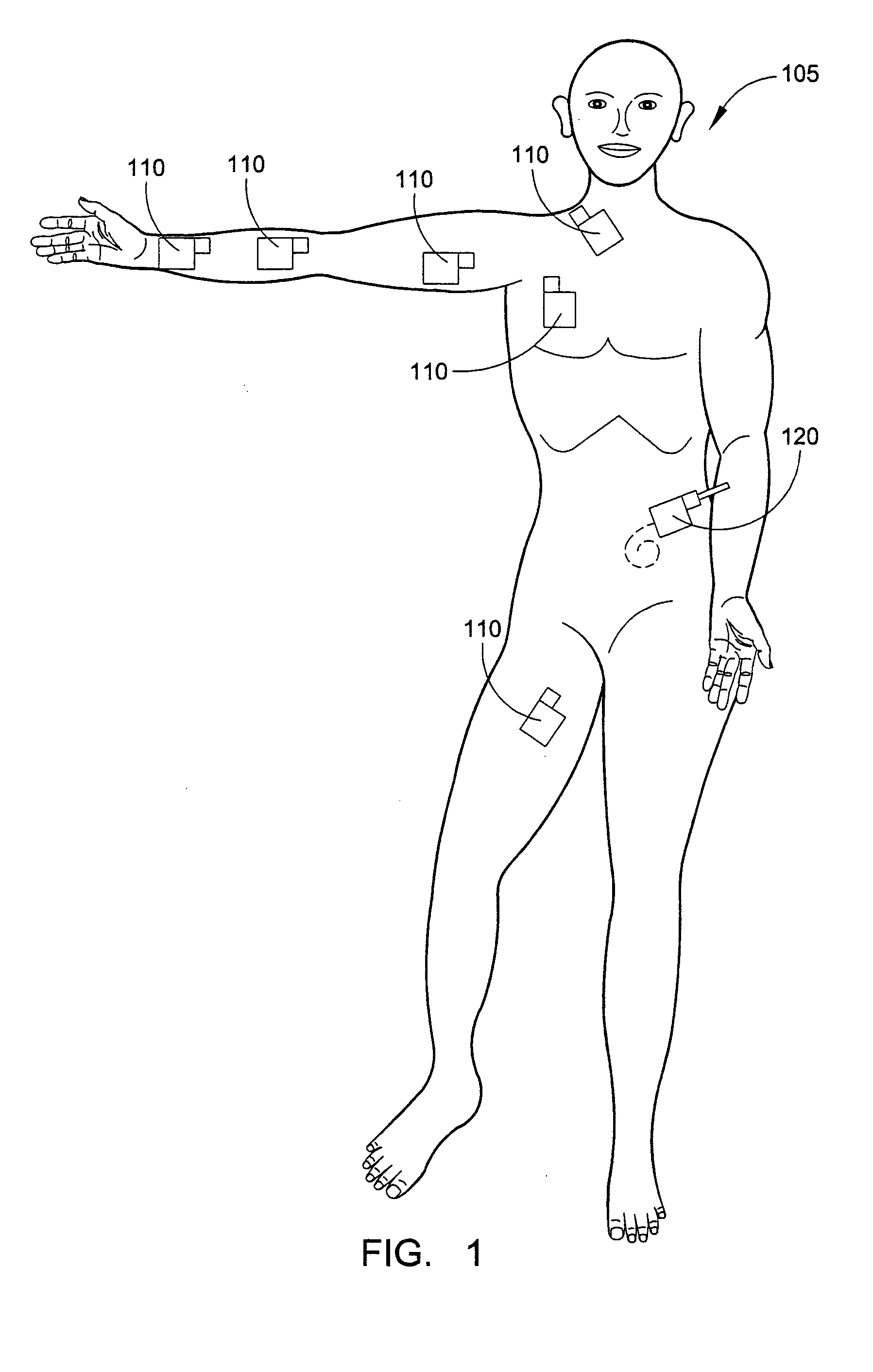Method and device for monitoring loss of body fluid and dislodgment of medical instrument from body
a technology of body fluid and monitoring device, which is applied in the direction of diagnostic recording/measuring, separation processes, applications, etc., can solve the problems of hemodialysis treatment, unintentional hazardous situation, and great pain
- Summary
- Abstract
- Description
- Claims
- Application Information
AI Technical Summary
Benefits of technology
Problems solved by technology
Method used
Image
Examples
Embodiment Construction
[0036] With reference to FIGS. 1-10, an embodiment of a system and method for monitoring a vascular access site of a patient 105 during a hemodialysis treatment and alerting the medical staff in the event of a needle dislodgment will be described.
[0037] Although the system will be described in conjunction with monitoring a vascular access site during a hemodialysis treatment, the system may be used for monitoring any penetration or access site through the skin with respect to blood, body fluids, and / or medical fluids that may leak around the skin penetration site and / or dislodgment of a needle relative to the skin penetration or access site. Further, the system may be used for monitoring access of the vascular system, access to sub-dermal or other implanted devices, access of the peritoneal cavity, access of internal organs, monitoring trans-dermal exudation, other usage where an alert to the leakage of blood, body fluids, medical fluids, liquids or other fluids may be desired, or ...
PUM
 Login to View More
Login to View More Abstract
Description
Claims
Application Information
 Login to View More
Login to View More - R&D
- Intellectual Property
- Life Sciences
- Materials
- Tech Scout
- Unparalleled Data Quality
- Higher Quality Content
- 60% Fewer Hallucinations
Browse by: Latest US Patents, China's latest patents, Technical Efficacy Thesaurus, Application Domain, Technology Topic, Popular Technical Reports.
© 2025 PatSnap. All rights reserved.Legal|Privacy policy|Modern Slavery Act Transparency Statement|Sitemap|About US| Contact US: help@patsnap.com



